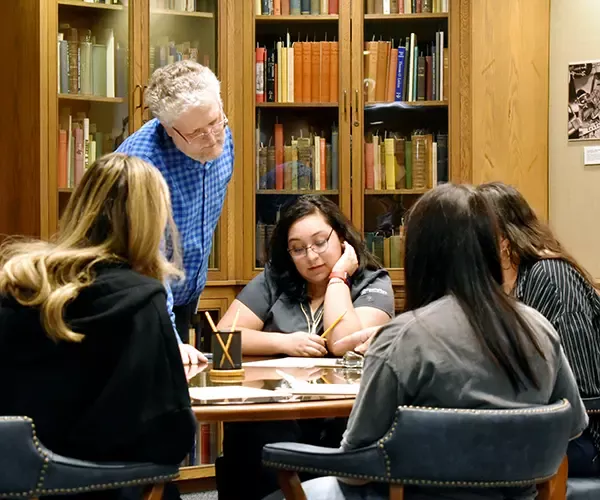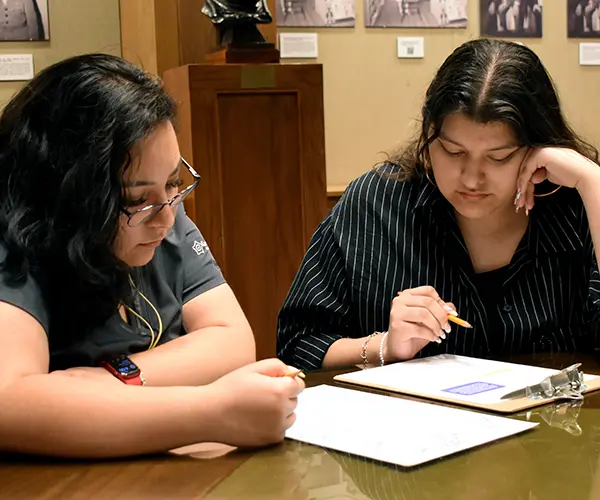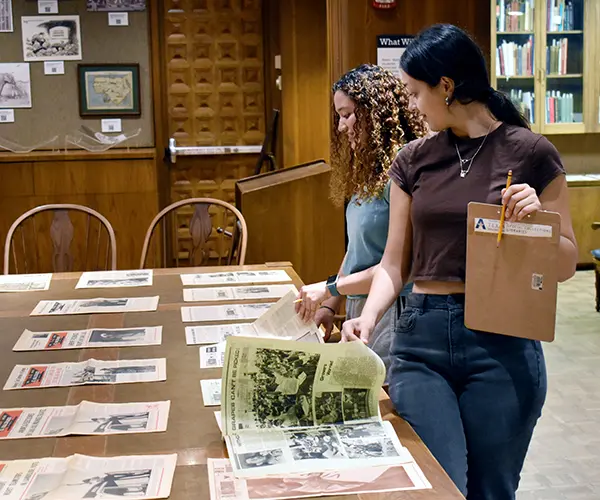
by Library News


by Library News
Students got to hold history in their hands and make “connections” during a visit to Special Collections at the UTA Central Library.
Latin American Culture and Civilization, Spanish 3312, students studied materials from the Chicano Civil Rights Movement on Wednesday, April 19, as part of a class assignment.
The hands-on lesson paired students up to review a document related to the labor movement and answer some basic questions about it. These questions included finding out when the document was written, who its audience was, its importance and why it was created.
Students later used the El Malcriado newspaper, published between 1964 and 1976 and founded by Cesar Chavez, to find the meaning behind the political cartoons in the publication.
Professor of Spanish, Dr. Chris Conway stated that using historical documents in a lesson helps to connect students to the history they are learning about in class.
“I have found over the years that students are fascinated with working with materials of this kind. College students and high school students are saturated in digital visual culture. They lack exposure to physical non-virtual artifacts,” Chris said. “My experience with them is that they respond positively to the materials in Special Collections. There is a hunger for that kind of tactile contact with history.”

Students in the Latin American Culture and Civilization, Spanish 3312, class take part in a hands-on lesson in the Special Collections Department at the UTA Central Library.
Evan Spencer, a public services archivist, stated that this type of lesson connects students with the past and helps them research future topics.
“The critical thinking exercise is to analyze a primary source, but it is also to get them comfortable working with this type of material,” Evan said. “We have a lot of return visits from students to work with something that they saw during the class session. They work that into a final paper for the class or some other project that they are doing.”

Students in the Latin American Culture and Civilization, Spanish 3312, class take part in a hands-on lesson in the Special Collections Department at the UTA Central Library.
Jenna Randle, a Spanish major, stated that this type of activity helps to connect you with the information you are learning in class better. By looking at physical documents, Jenna noted that she could see similarities in historical events in different countries, such as the same type of struggles that Cubans and Americans both went through.
Caroline Garcia, a Spanish major, stated that working with historical documents connects her with her roots.
“For me, I think it is more a part of my culture as a Chicana to learn our history of how working conditions used to be for Hispanics and Latin American people,” Caroline said.
The ability to not just see pictures or video about a topic, but hold the past in their hands, is part of what makes our Special Collections department at UTA Libraries so vital to the future.
Conway shared that the point of the lesson in Special Collections is to “give them this experience of working with primary sources and to create a sense of excitement and discovery.”
People can find more information about the UTA Libraries Special Collections Department online at https://libraries.uta.edu/collections/special-collections.
Information about UTA Libraries can also be found through its social media channels on Facebook, Twitter, Instagram and YouTube.
Add new comment